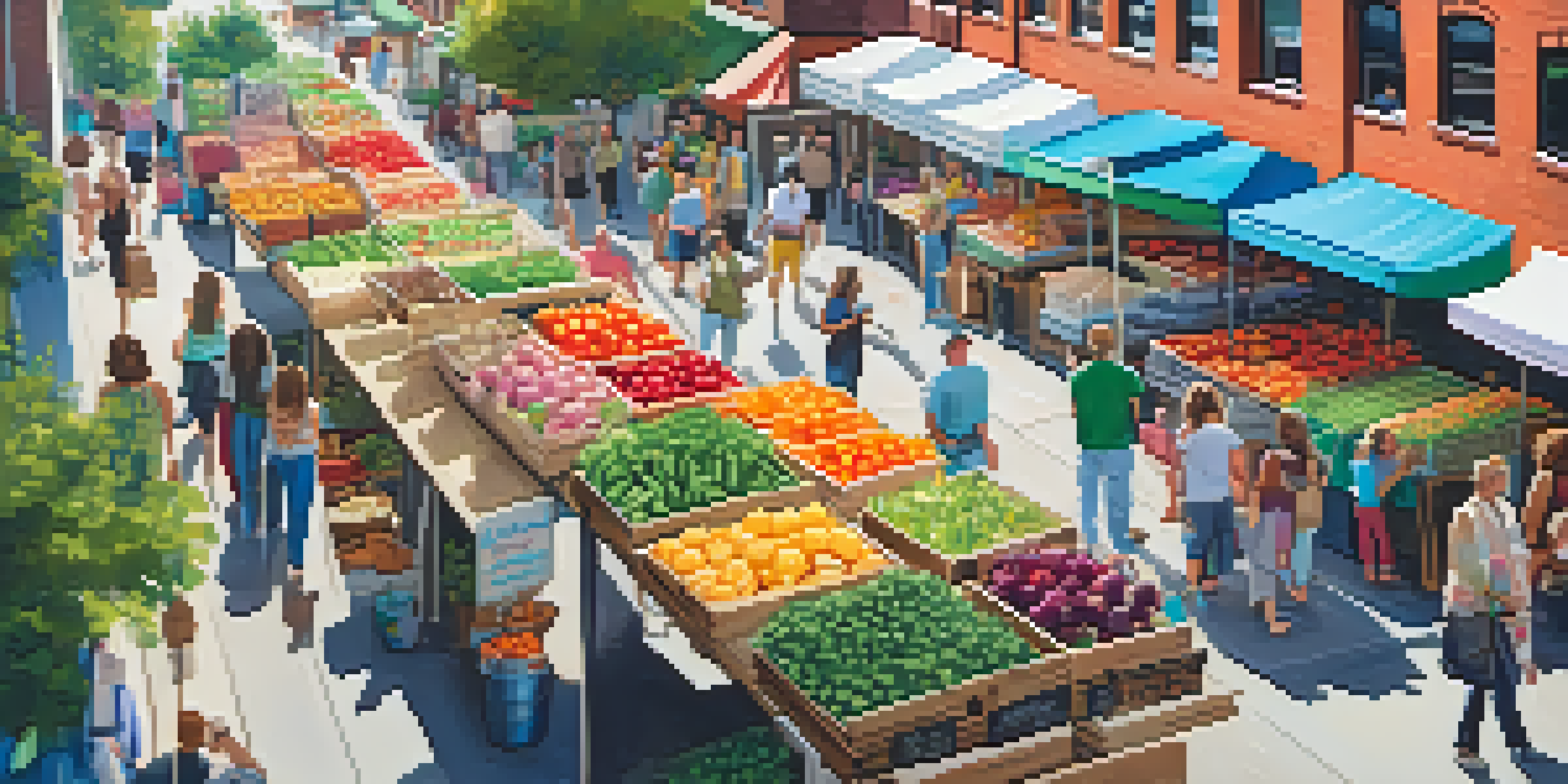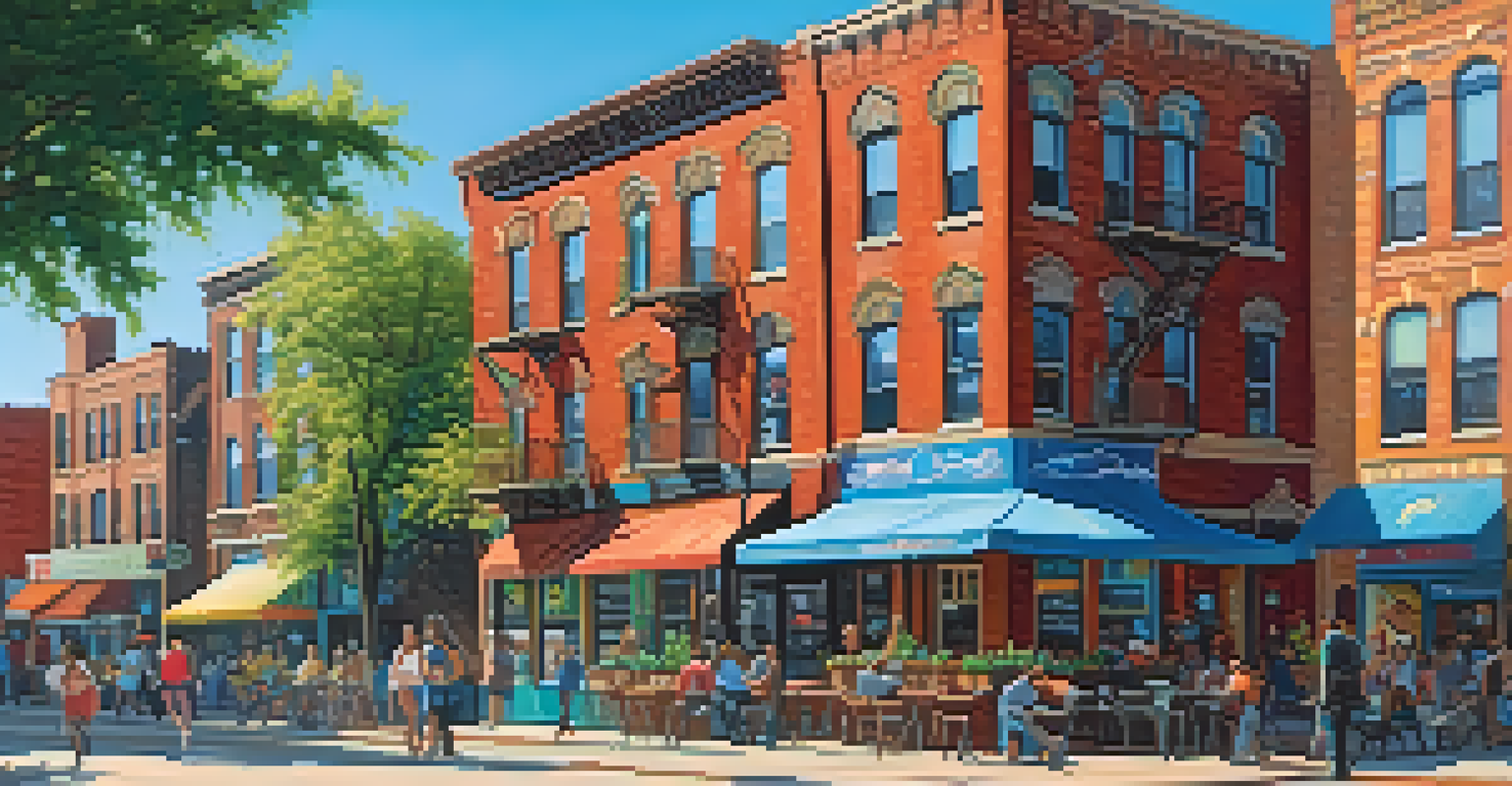Discovering the Rich History of Chicago's Historic Neighborhoods

An Overview of Chicago's Historic Neighborhoods
Chicago is a city that breathes history, with neighborhoods that tell tales of the past. Each area is a vibrant tapestry woven from the dreams and struggles of its inhabitants. From the bustling streets of Pilsen to the elegant homes in Hyde Park, these neighborhoods reflect the city’s rich cultural diversity.
Chicago is a city of neighborhoods, each one a unique reflection of the city's history and culture.
Many of these areas have roots that trace back to the 19th century, showcasing architectural styles that range from Victorian to modern. As you stroll through these streets, you can almost hear the echoes of the past, from the clattering of horse-drawn carriages to the lively chatter of immigrant communities. Understanding this history enriches your experience of the city.
Exploring Chicago's neighborhoods isn’t just about the sights; it’s about the stories. Every corner and building has a narrative waiting to be discovered, making each visit an adventure through time.
The Influence of Immigration on Neighborhoods
One of the most fascinating aspects of Chicago's neighborhoods is their evolution through immigration. Waves of immigrants have settled in the city, each group leaving an indelible mark on their surroundings. For instance, Pilsen became a hub for the Mexican community, transforming into a vibrant cultural center filled with murals and authentic cuisine.

As new communities arrived, they brought their languages, traditions, and flavors, creating a rich mosaic of cultures. This blending of backgrounds is what gives neighborhoods like Little Italy and Chinatown their unique character. It’s like a delicious stew where each ingredient contributes to the overall flavor.
Immigration Shapes Chicago's Culture
Chicago's neighborhoods have evolved through waves of immigration, creating a rich cultural tapestry that reflects diverse traditions and flavors.
Understanding this influence provides insight into the city’s identity. It’s a reminder that Chicago is not just a place; it’s a living history, shaped by the countless individuals who have called it home.
Architectural Gems of Historic Districts
Chicago is renowned for its stunning architecture, and many neighborhoods boast hidden gems that reflect the city's historical journey. From the ornate facades of the Prairie Avenue Historic District to the charming bungalows in the Roscoe Village, each building tells a story. These structures are not just places to live; they are artifacts of an era.
The past is never dead. It's not even past.
Exploring these architectural wonders is like flipping through a visual history book. You can see the evolution of design, from the grandeur of the 1893 World's Fair to the modernist movements of the 20th century. Architectural tours often highlight these features, allowing you to appreciate the artistry that went into their creation.
Ultimately, these buildings are a testament to the craftsmanship and vision of their time. They invite you to step back and reflect on the stories that have unfolded within their walls.
Cultural Landmarks and Their Significance
Cultural landmarks in Chicago serve as vital touchstones for the neighborhoods they inhabit. The historic theaters, museums, and galleries not only provide entertainment and education but also foster a sense of community. For instance, the iconic Chicago Cultural Center is a hub for art and music, showcasing local talent and hosting events.
These landmarks often become gathering places where traditions are celebrated and shared. They reflect the values and aspirations of the communities around them, making them integral to the neighborhoods' identities. Visiting these sites offers a glimpse into the cultural fabric of Chicago.
Architectural Heritage Matters
The city's historic buildings serve as architectural gems that narrate Chicago's journey, showcasing the craftsmanship and stories of past eras.
Moreover, they serve as reminders of the city’s commitment to the arts and community engagement. They invite both residents and visitors to participate in a shared cultural experience, fostering connections that transcend generations.
The Evolution of Neighborhood Economies
The economies of Chicago's neighborhoods have transformed dramatically over the years. Once predominantly industrial, many areas have shifted towards service-oriented and creative economies. This evolution is evident in neighborhoods like Wicker Park, which has transitioned from a working-class area to a trendy hotspot filled with boutiques and cafes.
This shift often reflects broader economic trends and changes in society, making it an interesting case study in urban development. As businesses adapt to meet the needs of the community, new opportunities arise, showcasing resilience and innovation. It’s like watching a city constantly reinvent itself.
Understanding these economic changes can enhance your appreciation for the neighborhoods. It highlights the dynamic nature of urban life and the importance of supporting local businesses to sustain community growth.
Historical Events That Shaped the City
Chicago's neighborhoods have been witnesses to significant historical events that shaped not only the city but also the nation. From the Great Chicago Fire of 1871, which led to a massive rebuilding effort, to the Civil Rights Movement that sparked social change, these moments are etched in the collective memory of the city. Each neighborhood has its own story to tell.
Visiting sites related to these events can provide a deeper understanding of their impact. For example, the Bronzeville neighborhood is known for its role in the Great Migration, where African Americans sought better opportunities. Today, it stands as a symbol of resilience and cultural pride.
Community Engagement Drives Change
Local initiatives and grassroots activism foster connections among residents, enhancing community spirit and ensuring everyone has a role in shaping their neighborhood.
By exploring these historical narratives, you gain a richer perspective of Chicago’s legacy. It’s a reminder that history is not just about the past; it influences our present and future.
Community Engagement and Local Initiatives
Community engagement is at the heart of Chicago's neighborhoods, with local initiatives driving change and fostering connections. Residents often come together to address issues, celebrate diversity, and promote local culture. This grassroots activism can be seen in events like neighborhood festivals and farmers' markets, which encourage collaboration and community spirit.
These initiatives not only enhance the quality of life but also serve as a platform for residents to express their needs and aspirations. They create a sense of belonging, reminding us that everyone has a role in shaping their community. It’s like a vibrant tapestry where each thread contributes to the overall design.

Participating in these local efforts can deepen your connection to the neighborhood. It’s an opportunity to meet new people, learn about different cultures, and contribute to a cause greater than yourself.
Preserving the Legacy of Chicago's Neighborhoods
As Chicago continues to evolve, the preservation of its historic neighborhoods becomes increasingly important. Efforts to maintain the architectural integrity and cultural significance of these areas are crucial for future generations. Organizations work tirelessly to advocate for preservation, ensuring that the stories and characteristics of these neighborhoods endure.
This preservation is not just about maintaining buildings; it’s about safeguarding the memories and experiences that define the community. It’s akin to protecting a cherished family heirloom, ensuring that the legacy lives on. Engaging with preservation efforts can help you appreciate the value of these spaces.
By supporting local initiatives and becoming aware of the issues at hand, you can play a role in preserving Chicago’s rich history. It’s a collective responsibility that fosters a deeper appreciation for the city’s unique heritage.